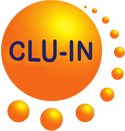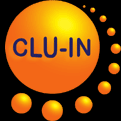Search Result
DEEP VADOSE ZONE TREATABILITY TEST OF SOIL DESICCATION FOR THE HANFORD CENTRAL PLATEAU
Truex, M.J., G.B. Chronister, C.E. Strickland, C.D. Johnson, G.D. Tartakovsky, M. Oostrom, et al.
PNNL-26902, 318 pp, 2018
Filed Under: Research
Filed Under: Research
Some of the inorganic and radionuclide contaminants in the deep vadose zone at the Hanford Site are at depths where direct exposure pathways are not of concern, but remediation may be needed to protect groundwater. Desiccation was field-tested as a potential vadose zone remediation technology to be used in conjunction with a surface infiltration barrier for groundwater protection. The desiccation technology relies on removal of water from a portion of the subsurface such that the resultant low moisture conditions inhibit downward movement of water and dissolved contaminants. Overall objectives for the field test were to provide technical data as a design basis for desiccation, demonstrate desiccation at the field scale, and provide scale-up information for use in subsequent feasibility studies. In the 6-month duration of the field test, a subsurface zone ~10 ft thick out to a radius of ~10 ft was desiccated, creating conditions that reduced the rate of moisture and contaminant movement toward groundwater. The field test successfully provided information addressing key performance factors for desiccation. https://www.osti.gov/biblio/1423418-deep-vadose-zone-treatability-test-soil-desiccation-hanford-central-plateau-final-report
PNNL-26902, 318 pp, 2018
Filed Under: Research
Filed Under: Research
Some of the inorganic and radionuclide contaminants in the deep vadose zone at the Hanford Site are at depths where direct exposure pathways are not of concern, but remediation may be needed to protect groundwater. Desiccation was field-tested as a potential vadose zone remediation technology to be used in conjunction with a surface infiltration barrier for groundwater protection. The desiccation technology relies on removal of water from a portion of the subsurface such that the resultant low moisture conditions inhibit downward movement of water and dissolved contaminants. Overall objectives for the field test were to provide technical data as a design basis for desiccation, demonstrate desiccation at the field scale, and provide scale-up information for use in subsequent feasibility studies. In the 6-month duration of the field test, a subsurface zone ~10 ft thick out to a radius of ~10 ft was desiccated, creating conditions that reduced the rate of moisture and contaminant movement toward groundwater. The field test successfully provided information addressing key performance factors for desiccation. https://www.osti.gov/biblio/1423418-deep-vadose-zone-treatability-test-s
The Technology Innovation News Survey welcomes your comments and
suggestions, as well as information about errors for correction. Please
contact Michael Adam of the U.S. EPA Office of Superfund Remediation
and Technology Innovation at adam.michael@epa.gov or (703) 603-9915
with any comments, suggestions, or corrections.
Mention of non-EPA documents, presentations, or papers does not constitute a U.S. EPA endorsement of their contents, only an acknowledgment that they exist and may be relevant to the Technology Innovation News Survey audience.





